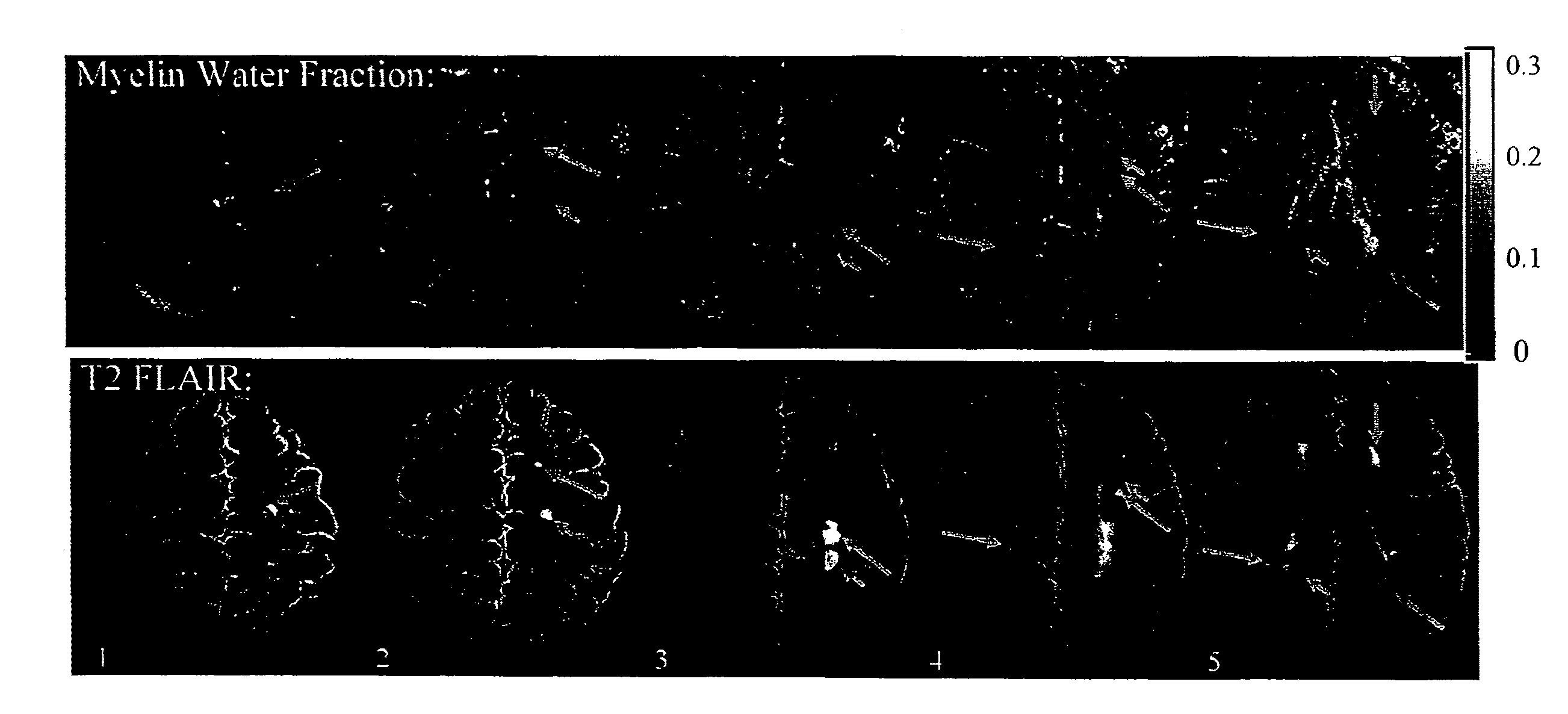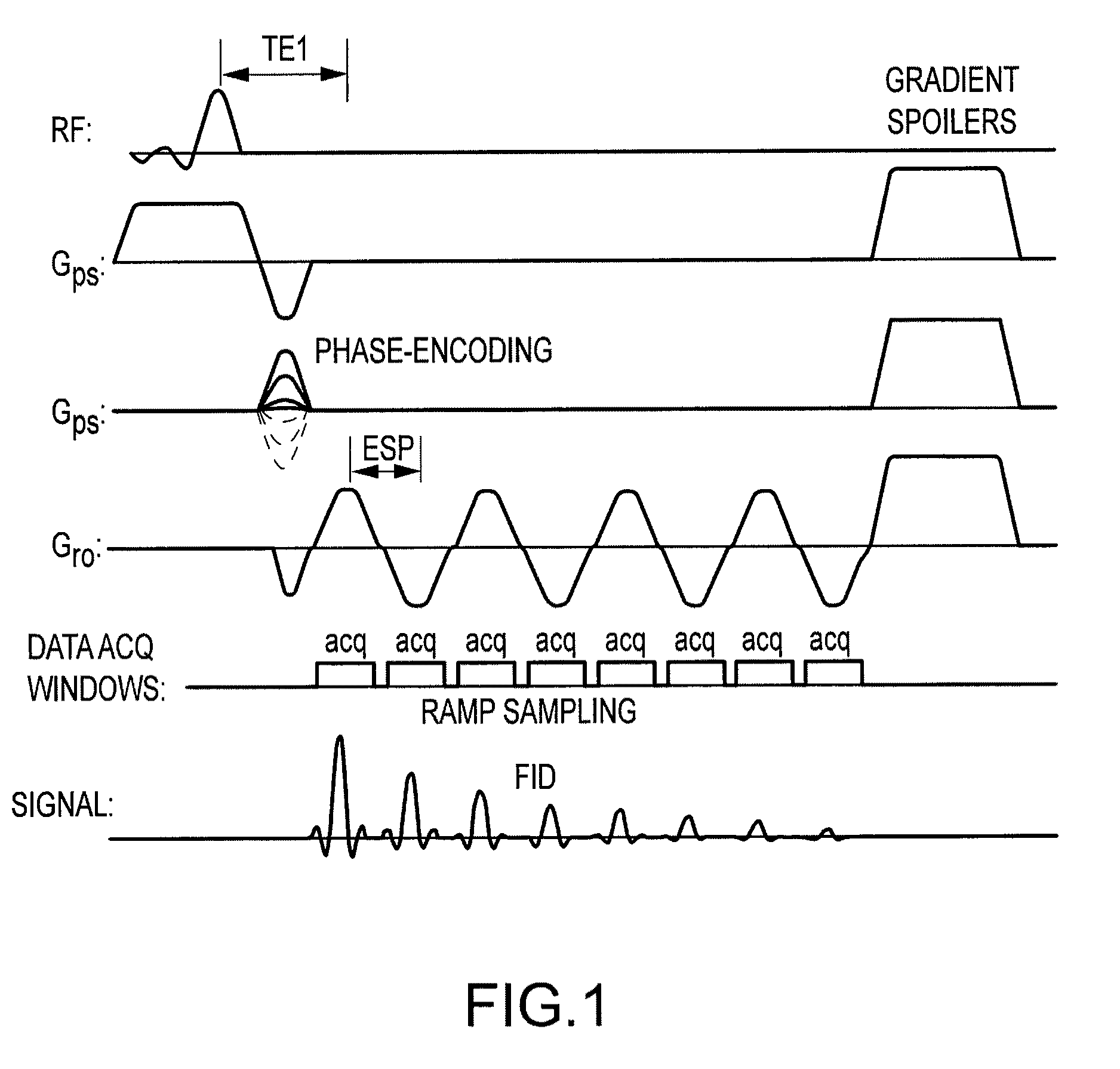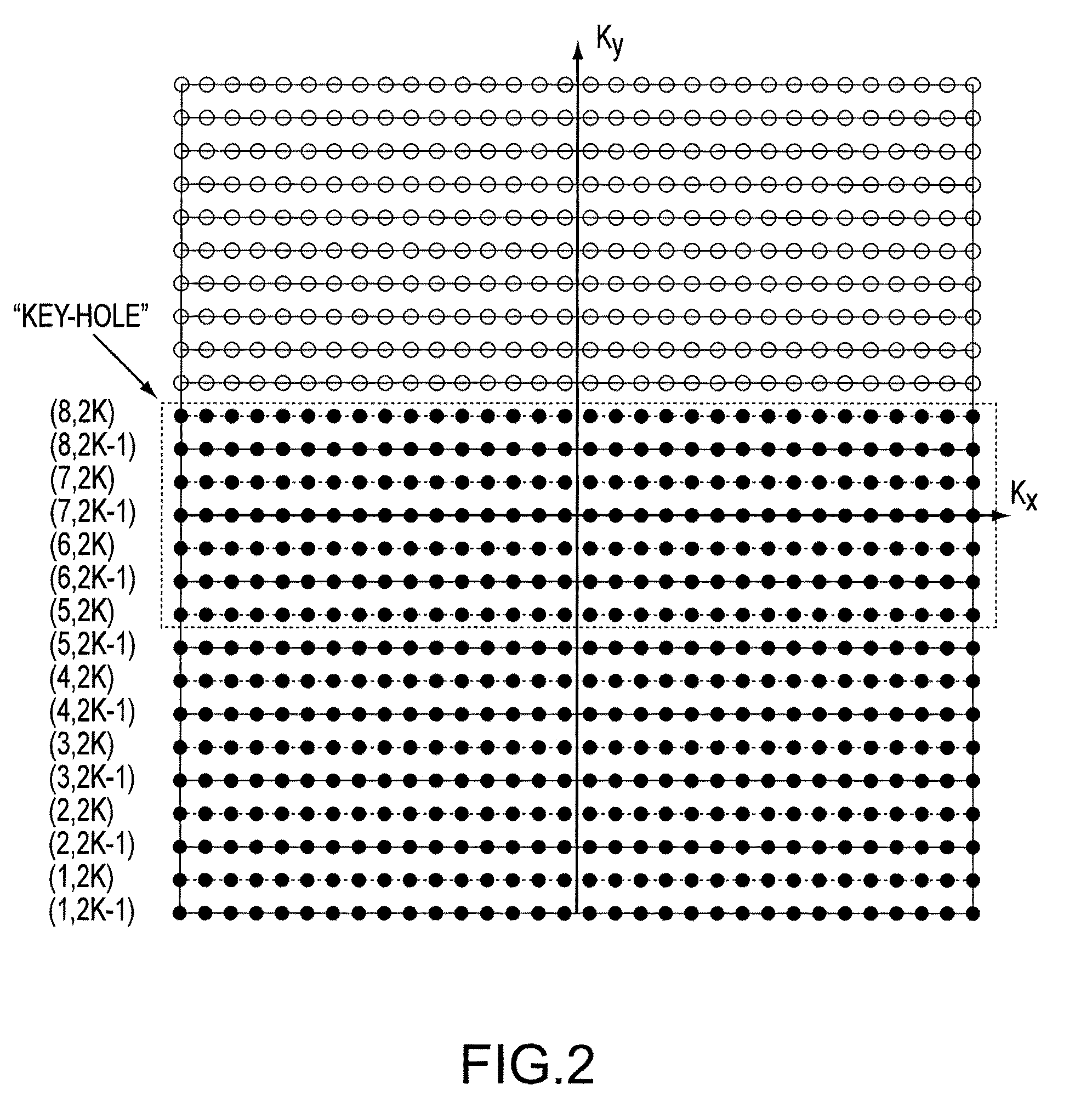Method for fast multi-slice mapping of myelin water fraction
a multi-slice mapping and myelin technology, applied in the field of magnetic resonance imaging, can solve the problems of insufficient correlation between the semisolid proton fraction and the myelin and axonal density, damage to myelin and axons, and less meaningful measurements in many brain regions, so as to reduce the duration of data acquisition, increase the volume coverage, and reduce the length of the sequence for each k-space line with epsi acquisition
- Summary
- Abstract
- Description
- Claims
- Application Information
AI Technical Summary
Benefits of technology
Problems solved by technology
Method used
Image
Examples
Embodiment Construction
[0038]For purpose of clarity, it is helpful to define some terms used in this disclosure. It should be appreciated that the following definitions are used throughout this application. Where the definition of terms departs from the commonly used meaning of the term, the definitions provided herein should be used in interpreting the present disclosure, unless specifically indicated otherwise.
[0039]For purpose of the present invention, the terms “subject” and “individual” are used interchangeably to refer to either a person or an animal. The term “MRI” refers to any imaging technique utilizing magnetic resonance to analyze an individual's body or any part thereof.
[0040]A “voxel” is a volume element, representing a value in three dimensional space. The value of a voxel may represent various properties in different applications.
[0041]In the 3-pool model, WM tissue consists of a myelin (my) pool, a myelinated axon (ma) pool, and a mixed (mx) pool. This model was originally applied to the ...
PUM
 Login to View More
Login to View More Abstract
Description
Claims
Application Information
 Login to View More
Login to View More - R&D
- Intellectual Property
- Life Sciences
- Materials
- Tech Scout
- Unparalleled Data Quality
- Higher Quality Content
- 60% Fewer Hallucinations
Browse by: Latest US Patents, China's latest patents, Technical Efficacy Thesaurus, Application Domain, Technology Topic, Popular Technical Reports.
© 2025 PatSnap. All rights reserved.Legal|Privacy policy|Modern Slavery Act Transparency Statement|Sitemap|About US| Contact US: help@patsnap.com



